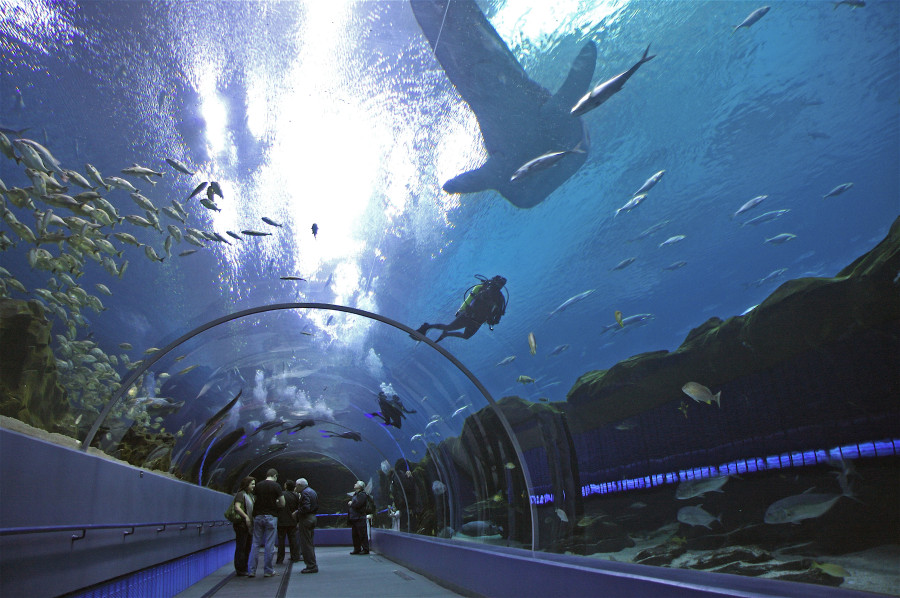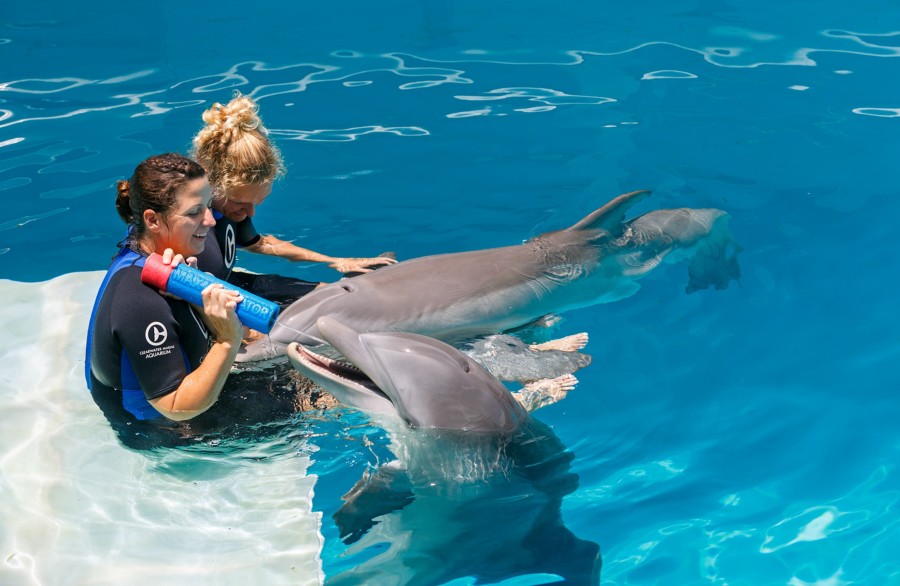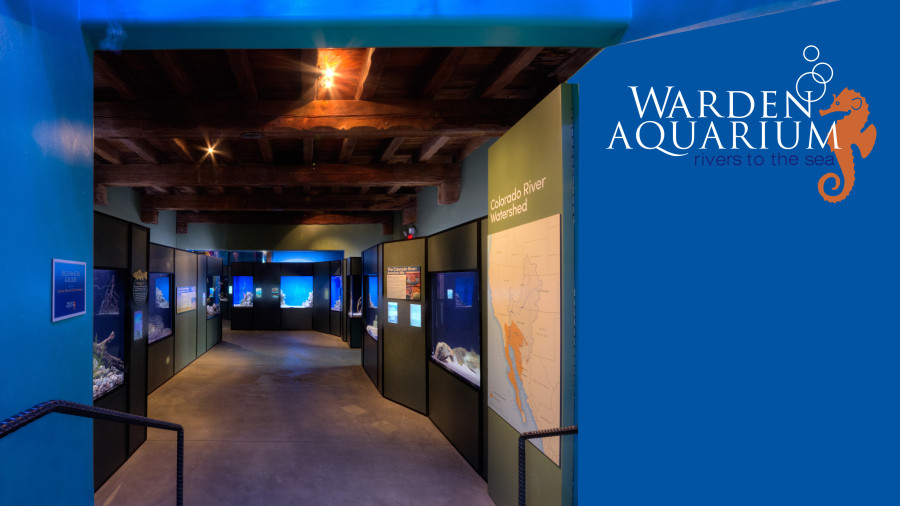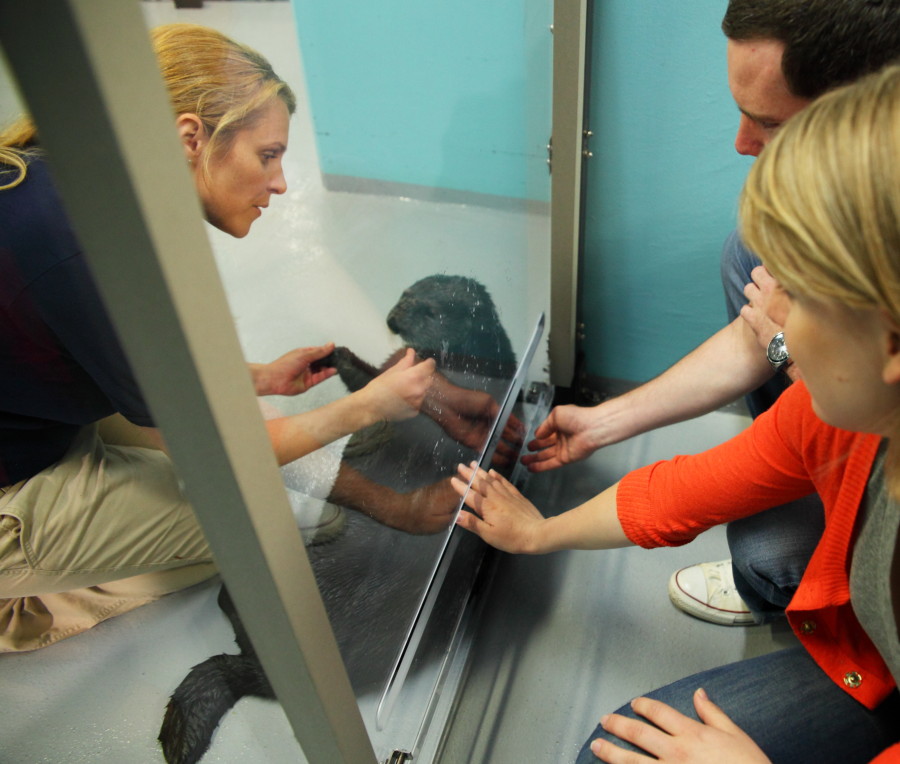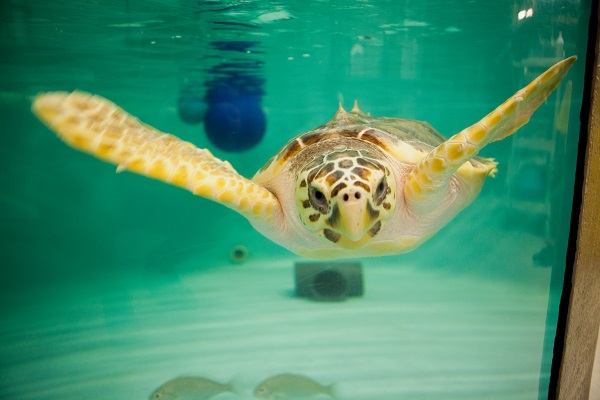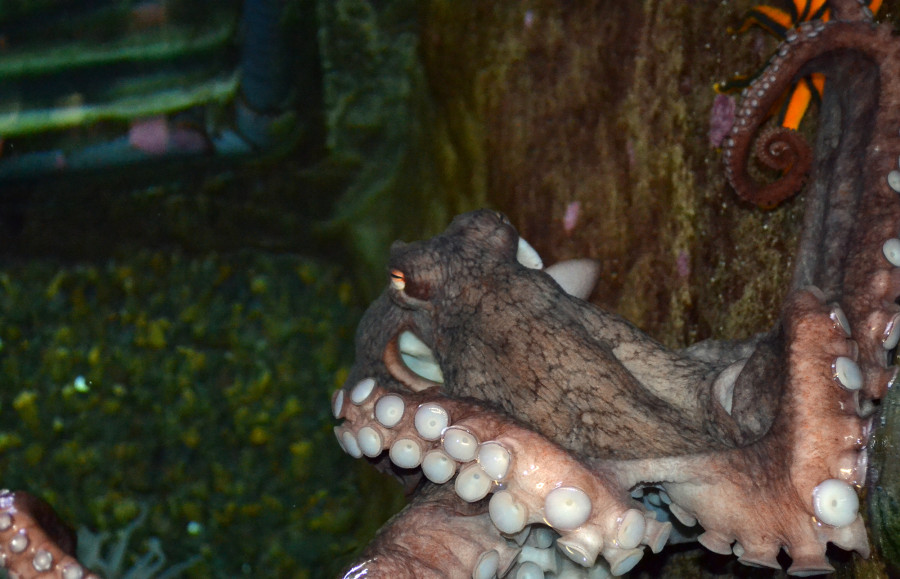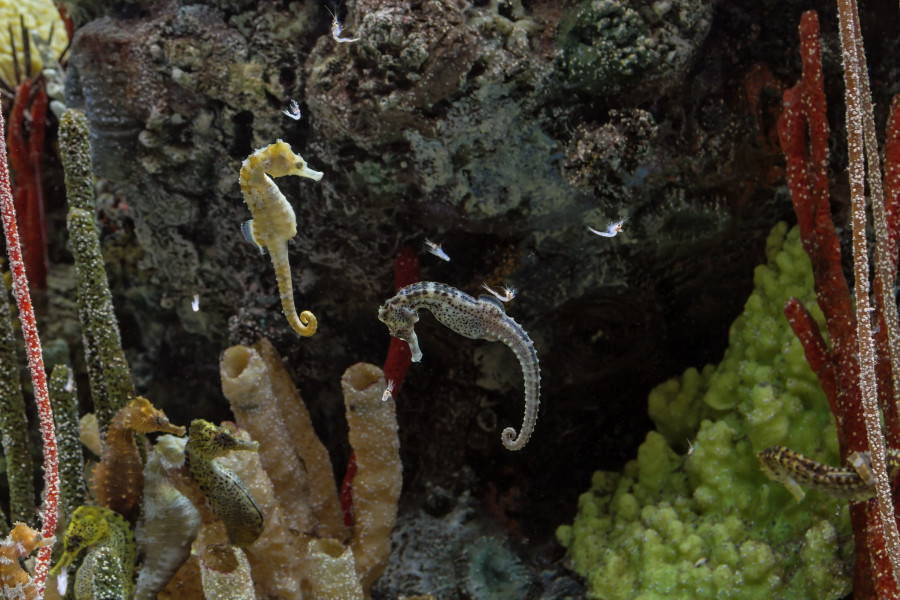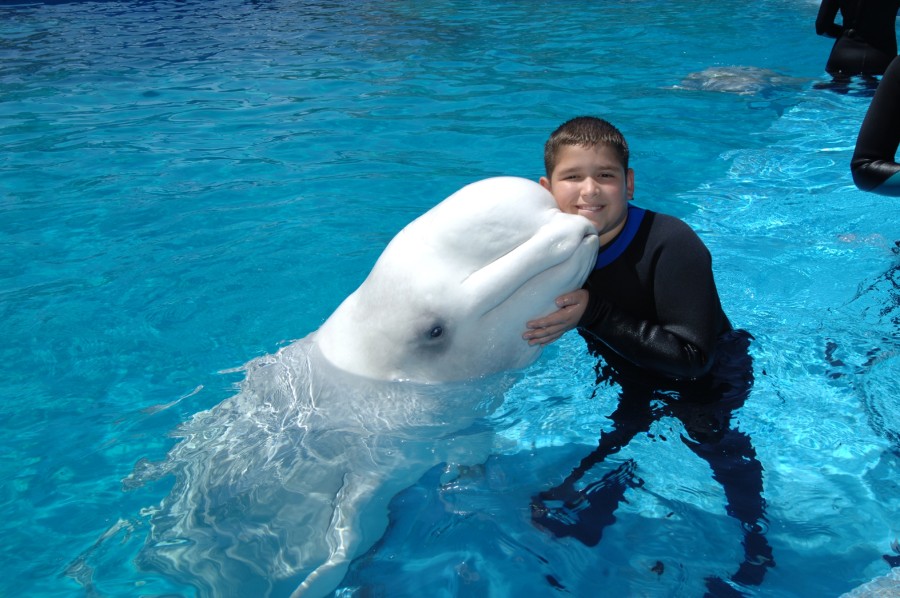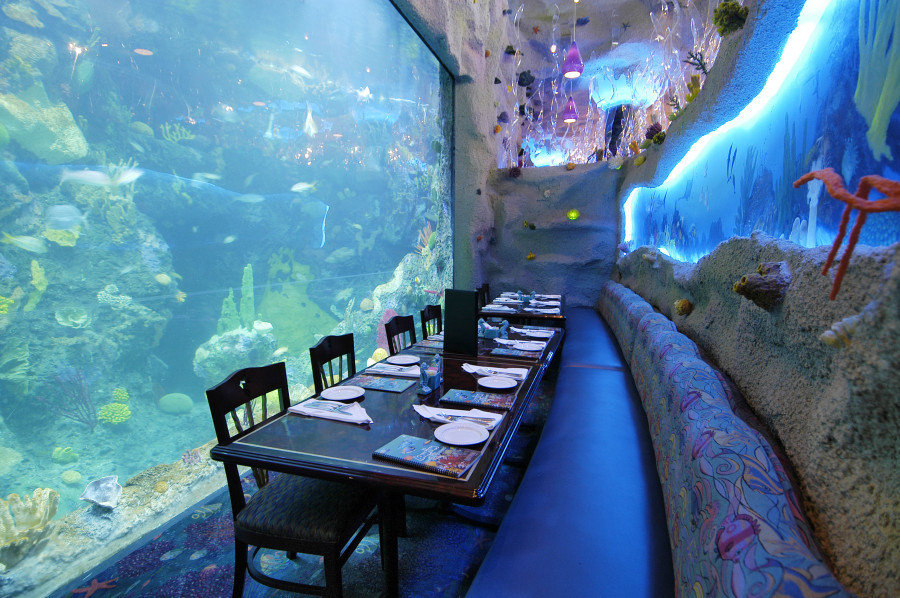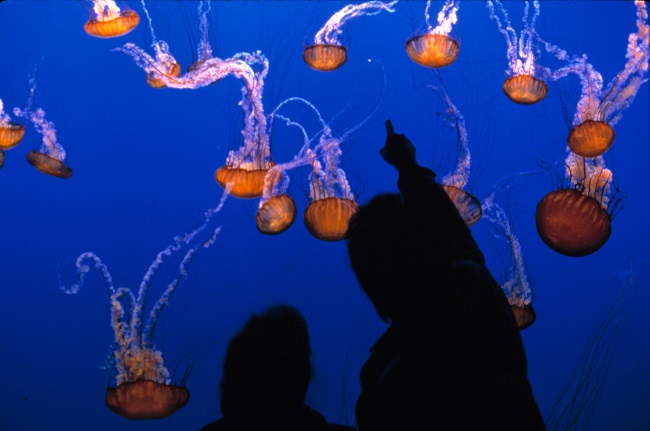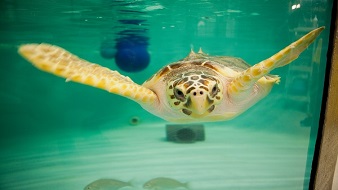
10 Unique Aquarium Experiences
In nearly every major city you will find an aquarium and it’s easy to think they all may start to look the same. But with so many offering unique ways to get up close with animals there are several different experiences to be had. Check out these 10 ways to get up close with marine life at aqariums across the country.
1. Swim with whale sharks.
There’s only once place in the world that can guarantee visitors a swim with whale sharks, and that’s Georgia Aquarium’s “Ocean Voyager” exhibit. Their Journey With Gentle Giants offers the opportunity to swim at the surface of the exhibit with a flotation device for a once-in-a-lifetime experience. Those who are scuba certified can also dive in the tank.
“Ocean Voyager” is a 6.3 million gallon aquatic habitat that is home to thousands of animals. In additional to whale sharks, guests might spot manta rays, stingrays, groupers and zebra sharks during their swim or dive.
2. Be a marine animal trainer for a day
Kids who dream of a career training dolphins can get a firsthand look at a day in the life of a marine animal trainer at the Clearwater Marine Aquarium in Florida. Set in one of the state’s most beautiful beach towns, the CMA is a nationally recognized non-profit noted for its groundbreaking work in marine rescue, rehabilitation and release. It was also the setting of Dolphin Tale 2, a film hitting theaters this fall. Visitors can take an in-depth tour of the facility and even volunteer to be a trainer for the day, where they’ll bond with the animals and explore what a career as a marine animal trainer is like.
3. Go behind the scenes at the Arizona-Sonora Desert Museum.
On the museum’s Warden Aquarium Private Tour, offered Tuesdays and Sundays, you’ll go behind-the-scenes with an expert and learn about the biodiversity of the desert region. The tour begins with freshwater river species, many of which are endangered, before taking visitors through salt-water species living in the Gulf of California. Guests will get an in-depth look at how the aquarium functions and learn about how the keepers care for the animals.
4. Go inside the home of sea otters.
Another must-do at the Georgia Aquarium is the Sea Otter Encounter. Go behind the scenes at the otters’ home in the Georgia-Pacific Cold Water Quest Gallery, where you can interact with the animals, learn about the aquarium’s rescue, research and conservation initiatives, and enjoy an exclusive tour of the facility. The tour lasts about 40 minutes, and offers guests the chance to help prepare a sea otter meal and participating in a training session alongside the aquarium’s trainers.
5. Visit a sea turtle hospital.
The South Carolina Aquarium is dedicated to conservation of the ocean and its species, and much of the work it does is through its Sea Turtle Hospital. The aquarium takes in sick and injured turtles to be rehabilitated before they are released back into the wild, and visitors can take a tour of the hospital twice daily at noon and 2 p.m.
6. Come face to face with a giant octopus.
Have you ever seen a giant octopus up close? You can during a Giant Pacific Octopus Encounter at the Oregon Coast Aquarium. The Encounter offers visitors to the aquarium the chance to interact with one of these fascinating eight-armed animals and even feed them. Octopuses are one of the more unique animals you can see in the aquarium, since they can change the color and texture of their skin instantly. Researches believe they’re as smart as house cats and could use simple tools and recognize individuals. In fact, they’re known for getting a little frisky with visitors: spend too much time with an octopus and it might leave little rows of hickies on your forearm or hand.
7. Encounter seahorses in Tennessee.
Seahorses are bizarre and amazing, with physical features and lifestyles that defy reality. Their horse-like heads, long snouts, a monkey-like tail and eyes that move on their own make them look like something out of a sci-fi movie, not a real creature you’d find in the ocean. Kids and adults alike will be fascinated by the feeding time at the Tennessee Aquarium’s “Seahorses: Beyond Imagination” exhibit, which provides guests the opportunity to learn about the unique species, watch them eat and ask questions of aquarium staff. The staff even brings out seahorse babies in a small container for guests to see up close.
8. Interact with belugas at SeaWorld San Antonio.
SeaWorld is one of the only places in the world where visitors can enter a beluga habitat, so if you’ve ever wanted to meet this mysterious white whale, this is your chance. Guests don a wet suit and wade into the pool, where they’ll pet, interact with and play with belugas, mysterious and gentle marine mammals that are some of the park’s most sociable. Belugas are known for the unmistakable birdlike songs they sing, and a low dorsal ridge that allows them to swim beneath thick ice and find breathing holes in the waters of their icy arctic homes.
9. Dive with sharks and barracudas at the Denver Aquarium.
Coming face-to-face with sharks and barracudas might not sound appealing to everyone, but fearless divers can do just that at the Denver Aquarium. Certified divers are able to swim with Sand Tiger sharks, Brown sharks, Zebra sharks, barracudas and more in the aquarium’s Sunken Shipwreck exhibit. Guests who book this adventure will also encounter Guitar Fish, Saw Fish and giant sea turtles during their dive. The best part of the entire experience might be the t-shirt you get at the end: what better way to boast to family and friends that you embraced danger and swam with sharks?
10. Touch the belly of a jelly fish.
Jelly fish are some of the most mysterious sea creatures, and many people are curious about what they feel like. You can find out at the Monterey Bay Aquarium, which offers a tour that takes guests behind the scenes of the glowing jelly exhibit, “The Jellies Experience,” and allows them too lightly touch the belly of a moon jelly. The tour also offers an exclusive up close look at the aquarium’s pioneering work in culturing jellies. You might get the chance to meet one of its “jelly wranglers,” who map the life cycles of several exotic jellies and “grow” them in the exhibit. Their advancements have helped the aquarium culture rarely-seen jellies like tiny thimble jellies, fluorescent flower hat jellies and diaphanous South American sea nettles.








